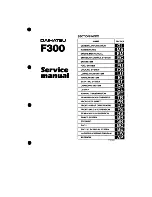
Loading and handling
Roof racks
•
Use a sturdy roof rack which can be se-
curely fitted to the car roof. Your Volvo
dealer can supply you with a roof rack
which is specially developed for your
particular Volvo model.
•
Check regularly to ensure that the roof
rack is securely fastened to the car.
•
Do not load more than 220 lb (100 kg)
on the roof.
•
Spread the load evenly over the rack.
•
Place the heaviest load at the bottom,
nearest the car roof.
•
Remember that the car's centre of gravity
alters with the weight of the load on the
roof rack, thus changing the driving cha-
racteristics.
•
Bear in mind that the frontal area of the car
increases with a roof-mounted load, thus
increasing fuel consumption.
•
Anchor the load securely using strong rope.
•
Drive smoothly. Avoid rapid starts, hard
cornering and abrupt stops.
•
Remove the roof rack when it is no longer
needed. This reduces wind resistance and
improves fuel consumption.
Note: Roof racks and ski boxes are supple-
mentary transport accessories intended for
carrying lightweight cargo. Always place the
heaviest load at the bottom and far forward
in the car's cargo space. The distance be-
tween the roof rack supports is 800 mm and
must not be altered (there is reinforcement
in the roof). This means that some older ski
boxes with a fixed distance between the roof
rack supports cannot be used.
Holes for roof rack
Weight distribution affects
handling
At the specified kerb weight your car has a
tendency to understeer, which means that
the steering wheel has to be turned more
than seems appropriate for the curvature of
the bend. This characteristic, together with
excellent weight distribution, ensures good
stability and reduces the risk of rear wheel
skid. Remember that these properties can
alter with the load. The heavier the load in the
boot the smaller the car's tendency to under-
steer. Make sure you do not exceed the car's
maximum laden weight or maximum axle
weight.
Do not drive with the boot open
If you drive with the boot open, exhaust
gases (including carbon monoxide) may be
drawn into the car. If you are forced to drive
for a short distance with the boot open, do as
follows:
•
Shut all windows
•
Shut the sun roof
•
Set the heater control to
the fan to full speed, 4.
Handling, roadholding and tyres
Tyres play an important part in the handling
and roadholding of a car. The type of tyre
(radial), size and pressure are important for
proper handling. When fitting new tyres, it
is therefore very important to fit tyres of the
same size and type (and preferably same make)
as those previously fitted, and follow the
recommendations concerning tyre pressure
on 4:3.
and switch
All manuals and user guides at all-guides.com
all-guides.com
















































